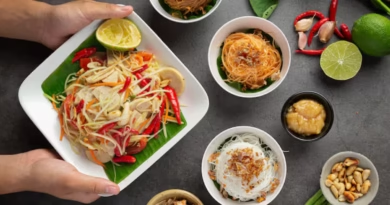Shawarma Time: Everything You Need to Know About This Delicious Dish
Shawarma Time: The Ultimate Guide to Enjoying Shawarma

Table of Contents
ToggleArticle Summary
Shawarma is a popular street dish that has become well-known all over the world because of its distinctive preparation and depth of flavor. It is served warm in a pita or flatbread with a choice of delectable toppings and consists of spiced meat, usually lamb, chicken, or beef, grilled on a vertical rotisserie. We will look at the history, preparation, and reasons for the popularity of shawarma in this post. We will also go over how to cook it at home, common accompaniments, and variants. You will fully get what makes “shawarma time” unique and why foodies around are still enthralled by it by the end.
What is Shawarma?
A vertical rotisserie is used to cook seasoned meat in the Middle Eastern meal known as shawarma. On a large skewer, the meat—typically lamb, chicken, or beef—is layered and grilled slowly while turning. As the outer layers of the meat cook, the soft, juicy slices can be shaved off thanks to this cooking technique. Shawarma is usually served on a warm pita or flatbread with sauces like tahini, garlic sauce, or yogurt on top and veggies like tomatoes, cucumbers, and onions as garnish.
The Origins of Shawarma
Shawarma’s roots are in the Ottoman Empire, more especially in the Levant, which covers what is now Syria, Lebanon, and Jordan. The Turkish term “çevirme,” which means “turning” or “rotating,” is where the name “shawarma” originates. It describes the process of grilling meat on a revolving spit. Shawarma finally made its way to Europe and the US after becoming increasingly famous in the Middle East and beyond.
How is Shawarma Made?
Making shawarma involves a few key steps:
-
Marinating the Meat: Typically, shawarma meat is marinated in a mixture of oils, spices, and herbs. Cumin, coriander, paprika, turmeric, cinnamon, and allspice are common spices. Before cooking, the meat can absorb the rich flavors from this marinade.
-
Cooking on a Rotisserie: The meat is placed on a vertical rotisserie after marinating. The outer layers of meat cook gently as the skewer turns, turning golden brown and crispy.
-
Slicing the Meat: When the meat’s outer layers are done cooking, they are cut off with a sharp knife and eaten right away.
-
Assembling the Shawarma: Usually, the cooked meat is accompanied by pickles, tomatoes, cucumbers, and onions over a warm pita or flatbread. Depending on personal taste, shawarma is frequently topped with sauces such yogurt, tahini, or garlic sauce.
Popular Shawarma Varieties
Although lamb, chicken, or beef are frequently used in traditional shawarma, there are numerous variations to accommodate a range of palates:
-
Chicken Shawarma: Particularly for people who like lighter meat, this is one of the most popular varieties. After marinating in a mixture of spices, the chicken is cooked until it becomes soft.
-
Beef Shawarma: This version has a more strong and substantial flavor thanks to the use of thin slices of beef marinated in a complex blend of spices.
-
Lamb Shawarma: Many Middle Eastern nations love lamb shawarma because of its deep, gamey flavor.
-
Vegetarian Shawarma: To accommodate vegetarians and those seeking a meatless option, several variants use grilled veggies or falafel as the primary filling.
Shawarma Accompaniments and Toppings
Shawarma is frequently served with a variety of sides that improve the taste and texture. Among the well-liked additions are:
-
Hummus: A typical side dish for shawarma is hummus, a creamy dip made with chickpeas, tahini, and olive oil.
-
Tabbouleh: Tabbouleh, a crisp salad of bulgur wheat, tomatoes, and parsley, offers a welcome counterpoint to the hearty, spicy beef.
-
Pickles: Shawarma is frequently served with pickled cucumbers and turnips to add a tart bite that harmonizes the tastes.
-
Fries: French fries give the dish a crispy texture and are frequently served as an accompaniment or incorporated within the wrap in shawarma restaurants.
The Shawarma Experience: Why It’s So Loved
The following elements contribute to the popularity of Shawarma:
-
Versatility: Shawarma can be tailored to suit a variety of palates by adding different kinds of meat, sauces, and toppings.
-
Convenience: Because it is a quick and portable meal, it is ideal for casual dining settings or street food sellers.
-
Flavor: Savory and gratifying flavor is produced when spices, veggies, and sauces are combined with delicate, juicy meat.
-
Global Appeal: Due to its globalization, shawarma has developed into distinct regional varieties that are now enjoyed by people from a wide range of cultural backgrounds.
Shawarma Around the World
Despite its Middle Eastern origins, shawarma has gained popularity throughout the world and has even been modified to accommodate regional preferences:
-
In the United States: Shawarma, which is frequently offered at fast-casual restaurants, has gained popularity in numerous cities. American versions could include unusual toppings like buffalo sauce or avocado.
-
In Turkey: Shawarma, sometimes known as “döner kebab,” is usually eaten with pide or flatbread, among other bread options.
-
In Europe: Shawarma, which is sometimes served with yogurt-based sauces, is especially well-liked in nations like Germany, where Turkish immigrants brought the meal.
How to Make Shawarma at Home
Making shawarma at home is easier than it may seem. Here’s a simple recipe to try:
Ingredients:
-
1 lb chicken thighs (or your choice of meat)
-
2 tbsp olive oil
-
1 tsp cumin
-
1 tsp paprika
-
1 tsp turmeric
-
1 tsp coriander
-
1 tsp cinnamon
-
1/2 tsp allspice
-
1/4 cup garlic, minced
-
1/2 cup plain yogurt
-
Salt and pepper to taste
-
Pita or flatbread
-
Fresh vegetables (tomatoes, cucumbers, onions)
-
Tahini or garlic sauce
Instructions:
-
Prepare the Marinade: In a bowl, combine the olive oil, spices, garlic, and yogurt. Mix well to form a paste.
-
Marinate the Meat: Coat the chicken (or your chosen meat) in the marinade and refrigerate for at least 2 hours, or overnight for best results.
-
Cook the Meat: Grill the marinated meat on medium-high heat, turning until cooked through and golden brown on the outside.
-
Assemble the Shawarma: Slice the cooked meat into thin strips. Place it on warm pita or flatbread and top with fresh vegetables, sauces, and pickles.
-
Serve: Roll up the shawarma and enjoy!
Shawarma Time: When to Enjoy This Dish
Any time of day is a good time to eat shawarma, whether it is for a filling meal, a late-night snack, or a quick lunch. Shawarma is a popular option for anyone seeking a filling and tasty supper because so many street sellers serve it far into the evening.
Shawarma Time: Nutritional Information
Shawarma is great, but you should be mindful of its nutritional value. Shawarma can be a somewhat nutritious lunch or a more decadent choice, depending on the meat and extras you select. The following are some ballpark figures for a chicken shawarma’s nutritional value:
-
Calories: Around 400–600 calories per serving (depending on portion size)
-
Protein: Approximately 25–30 grams
-
Fat: 15–25 grams
-
Carbohydrates: 30–40 grams
For a healthier option, opt for a whole-wheat pita, lean chicken, and limit high-fat toppings.
Conclusion
Shawarma is an experience rather than merely a meal. Shawarma is a tasty and adaptable dinner, whether you are eating it from a neighborhood street seller or preparing it at home. Shawarma time is always a blast, thanks to its Middle Eastern origins and widespread appeal. Everyone may appreciate this dish because of its soft beef, spicy marinade, and assortment of toppings. Grab a shawarma the next time you are in the mood for something spicy and enjoy every morsel.
Frequently Asked Questions (FAQs)
What is the difference between shawarma and kebab?
Kebabs are usually grilled on skewers, whereas shawarma is cooked on a vertical rotisserie. Kebabs are frequently served on individual skewers, whereas shawarma is typically served in flatbread with a variety of toppings.
Can shawarma be made with other meats?
Indeed, you may make shawarma with chicken, beef, lamb, or even vegetarian alternatives like grilled veggies or falafel.
Is shawarma healthy?
If cooked with lean meat and eaten with fresh veggies, shawarma can be a nutritious choice. Portion size and toppings should be taken into account, though, as it can also be heavy in calories.
How do I store leftover shawarma?
Shawarma leftovers can be kept in the fridge for up to three days in an airtight container. Before eating, fully reheat.
Can I make shawarma without a rotisserie?
Yes, you can use an oven, stovetop, or grill to create shawarma. Just cook the marinated meat until the outside is brown and crispy.
What sauces are best with shawarma?
Tahini, yogurt-based sauces, and garlic sauce are typical sauces. For a hotter kick, you can also add hot sauce.
Citation and Disclaimer
The sole objective of this article is to provide information. The author is the sole owner of the opinions stated. The information presented is not meant to replace expert counsel.





